Mnemosyne was the name of the Greek goddess of memory. Aby Warburg, who pronounced it the Greek way, with the accent on the ipsilon, had it installed, in huge Greek characters, at the entrance to his library in Hamburg. More importantly, he had chosen it as the title for his Bilderatlas, the undertaking to which he devoted himself between 1927 and 1929: convinced that memory was first and foremost a collective fact and was responsible for returns that followed one another throughout history, Warburg had created an atlas of sixty-three maps that put together a thousand images (photographs of works of art first and foremost, but also newspaper clippings, original prints postcards, brochures) to show that the figurative creation of human beings is not a completely rational process, but lies zwischen imaginärem Zugreifen und begrifflicher Schau, that is, between imaginative understanding, which is situated at the level of the senses and is almost instinctive, and intellectual contemplation. The resurrection of motifs and forms transcends history, it knows no boundaries between different art forms (that is why Warburg had put everything into it, in his Bilderatlas), it derives from a force that is rooted in the consciousness of humanity.
Warburg’s project has always been the subject of intense study, which, however, has never crossed the barrier that divides specialists from the general public. And as a result, the vulgarisation of Mnemosyne is a rather recent fact. Fifty years after Gombrich and his biography of Warburg, a work that in part brought about some critical misfortune for the Bilderatlas, someone evidently felt it was time to publicize the results of Warburg’s great atlas, the original plates of which were exhibited for the first time all together in the fall of 2020 at the Haus der Kulturen der Welt in Berlin. A virtual exhibition put together by the Warburg Institute then ensued, and some attention also emerged in projects aimed at the general public as well. The exhibition Tempo Barocco at Palazzo Barberini, for example, opened with panels devoted to the fortune and “Baroque pathos of the rat.” Now, at Palazzo Te, where the exhibition Venus. Nature, Shadow and Beauty, Warburg becomes a sort of tutelary deity. The curator, Claudia Cieri Via, has been concerned with Warburg since the earliest times, and takes the opportunity to recall how Venus is "one of the key figures in Aby Warburg’s project, centered on the entry of the ’ideal antiquarian style’ into the art of the early Renaissance age, which takes shape primarily with Botticelli’s paintings at the Uffizi, the Birth of Venus and the so-called Primavera, the protagonists of Table 39 of Bilderatlas Mnemosyne.“ This is followed by timely description of Venus rising from the shell and revealing ”those aspects of movement, lightness, gesture and expression that will shape that topos of the nymph in the progressive formulation of the concept of ’Pathosformel allantica’ and on which Aby Warburg was reflecting in the last years of the century."
An exhibition on the implications of Bilderatlas for our understanding of the figure of Venus from the early Renaissance onward (with a “later” however indeterminate)? On the fortune of Warburg’s considerations? On Venus as an archetypal figure? On all the aspects (histories, characters, similarities, recursions, ascendants, symbolisms, literary presences) concerning the goddess of beauty dissected in a course of only forty-six works? Not really, or perhaps not only, or perhaps all of the above. Let us ask for help from Claudia Cieri Via’s essay in the catalog: Venus is the goddess of “power linked to beauty, love, voluptas, generation, spring,” from her emerge “female figures declined in different ways that take shape in characters from classical mythology like Leda, Danae, Semele, from the Old Testament like Judith or Salome, from the New Testament such as Magdalene, from medieval literature such as Matelda, but also in figures of the imagination and dreams such as Gradiva, of desire such as the Nymphs, Dryads and Nereids,” as well as those of orgiastic sensuality and the dark ones that lie somewhere between beauty and cruelty. An exhibition about the memory of the ancients resurfacing in the imagery of modern artists.

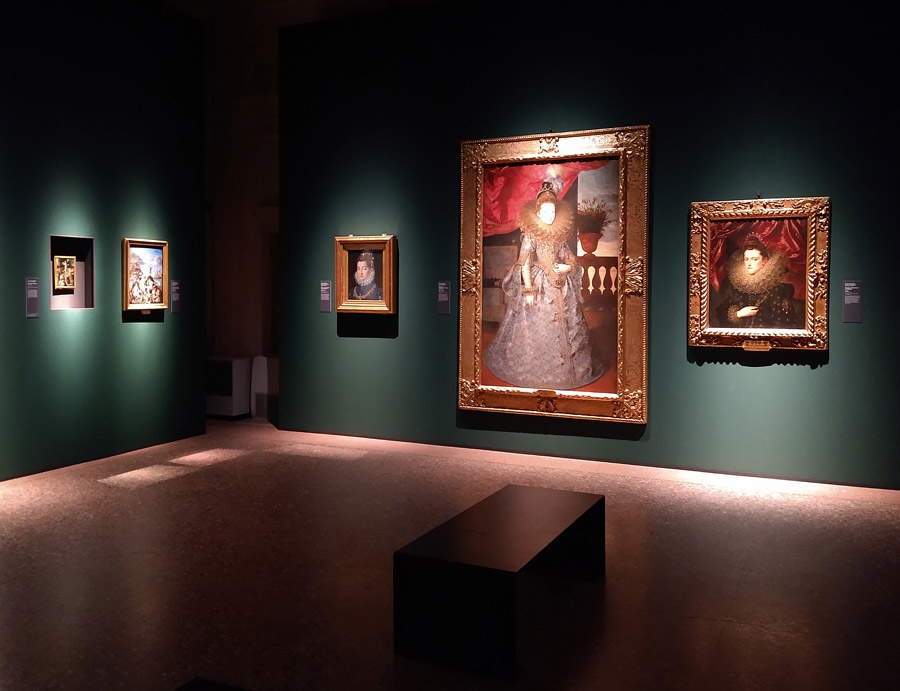
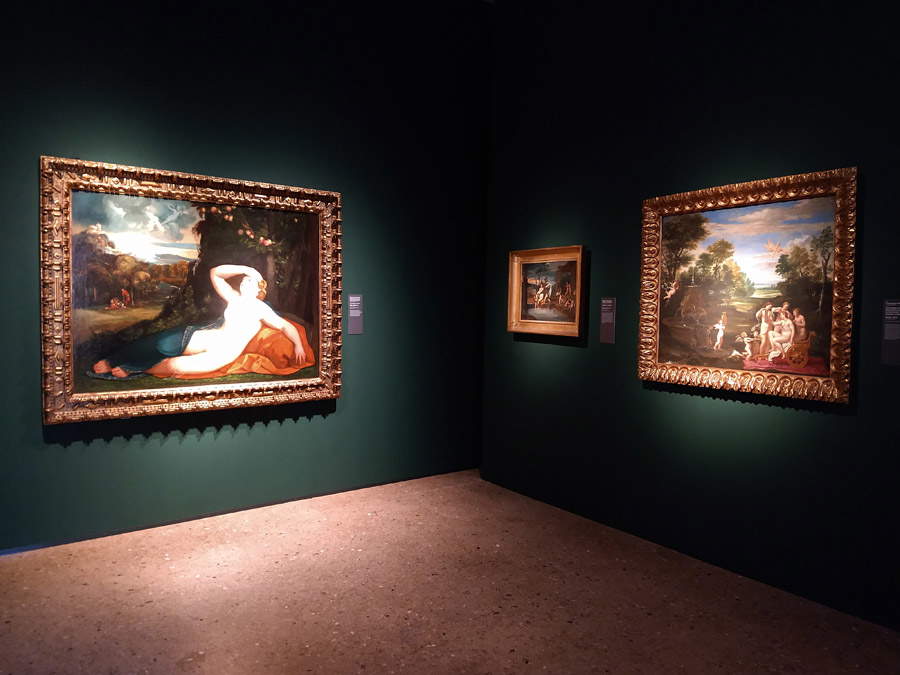
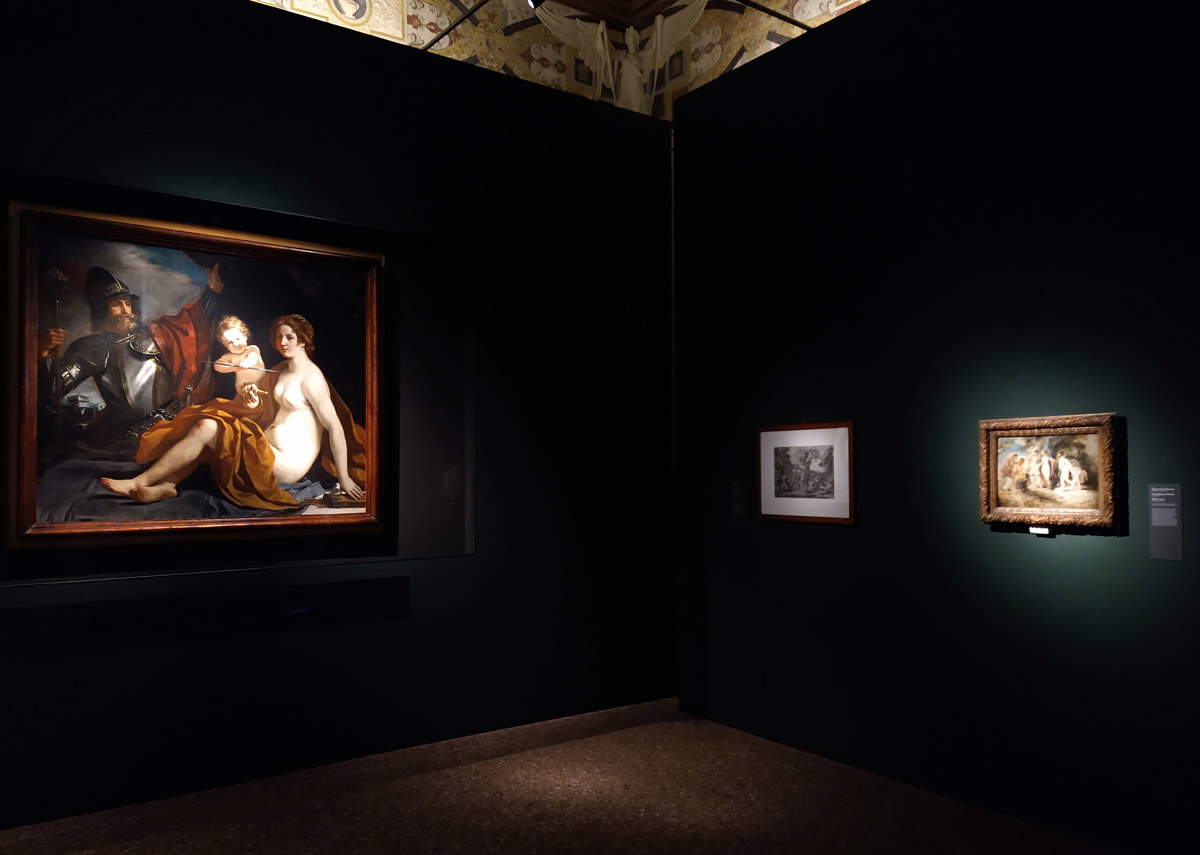
Section one, Venus and the Nachleben der Antike. There are three statues, three coins, a Warburg panel, an engraving, a manuscript, and an architectural frontispiece reproduced on parchment that seek to show us how Venus is “a Greek Olympian deity of many facets,” reads the panel that welcomes the audience to the room. The more observant visitor will notice that the Venus triumphans dominating the engraving attributed to the Florentine Baccio Baldini, on loan from the Museo Civico in Pavia (one of the rare early Renaissance objects in the exhibition, and the first of the eight 15th-century works encountered in the itinerary, all of which, moreover, are on paper), is not only seated in profile like the Venus Genetrix engraved on the verso of the denarius of Caracalla arriving from the Palazzo Massimo, but is also reproduced in Table 39 of Warburg’s Bilderatlas, dedicated to Venus and, specifically, Botticelli’s Venus. Botticelli is not in the exhibition, but visitors will appreciate the finesse with which the spirit of the great Florentine master is evoked precisely by the Pavia museum print, a work “dated to about 1460” (so Claudia Cieri Via in the catalog), among the most important in the exhibition, long studied by the Hamburg-based art historian, and a point of transition (if not contact) between the early 15th-century emergence of the Venus figure and Botticellian images, so much so that Warburg speculated that the invention might have been given to Botticelli himself (in which case it must be admitted that it would be a precocious fruit of his genius since, if one takes for granted a dating to about 1460, Botticelli was a fifteen-year-old boy at the time), according to an idea that the curator finds convincing.
TheCrouching Aphrodite lent by the Museo Ostiense, where the goddess is depicted just coming out of the bath, leads us to the second section. The public, it is known, loves stories. And they also love paintings on canvas and panel. And so the exhibition, after recounting some of the most famous myths with a sequence of prints (Venus, Mars and Vulcan, and then the stories of Adonis, with a 15th-century miniature by the master of Rambures to inform the public that artists in the Renaissance drew continuously from Ovid’s Metamorphoses ), he admires a two-way dialogue between a Perseus and Andromeda by Cavalier d’Arpino (the time horizon of the fifty or so works in the exhibition is quite broad) and a canvas with Venus, Cupid and a Satyr by Paris Bordon. It starts in 15th-century northern France, travels among Venetian prints on which one lingers for a long time (so much so that a century passes and one arrives at Bordon), after which one resumes the journey and arrives in the Rome of Giuseppe Cesari. The presence in the room of a work that has nothing to do with the fables of Venus is supported, the apparatuses explain, by the fact that the figure of Andromeda is exemplified by the images of the goddess (and then, after all, it is always a myth taken from the Metamorphoses ).
The concept of Venus instead informs the third section, introduced by the related figure from Cesare Ripa’sIconologia and set up in the same room as the second, since it actually continues the discourse, since the beauty of Venus is also narrated through its myths, and specifically through certain recurring characters: the eroticism of Paris Bordon’s Venus returns, moreover, in that of Orazio Samacchini. The latter, from the collections of the nearby Palazzo d’Arco, is surprising for the resolute manner in which the goddess takes the arrow out of her son’s hands, as if to say that love can often have negative consequences and therefore needs to be kept at bay: one of the most beautiful works in the exhibition, it is also an interesting reminder of the moralistic readings of the figure of Venus (touched on in part in the catalog in Massimiliano Simone’s essay) in a section that speaks of something else entirely (a cue, in short). For half the overall duration of the exhibition, the public was able to admire Titian’s Venus Blindfolding Love, later replaced in mid-September by a large canvas by Paolo Veronese with Venus and Mercury Presenting Eros and Anteros to Jupiter, on loan from the Uffizi, a rare subject for a painting probably executed on the occasion of a wedding (and which, despite having taken over while the exhibition was in progress, is one of the most valuable and interesting pieces in the show).



![Bottega di (?) Maître de Rambures, La figure de Venus et comment elle doit estre painte, miniatura in Les Metamorphoses d�?Ovide, traduites [en vers français] et moralisées (XV secolo; manoscritto miniato, 440 x 330 mm; Copenhagen, Det Kgl. Bibliotek)
Bottega di (?) Maître de Rambures, La figure de Venus et comment elle doit estre painte, miniatura in Les Metamorphoses d�?Ovide, traduites [en vers français] et moralisées (XV secolo; manoscritto miniato, 440 x 330 mm; Copenhagen, Det Kgl. Bibliotek)](https://cdn.finestresullarte.info/rivista/immagini/2021/1826/maestro-di-rambures-venus-comme-elle-se-painte.jpg
)
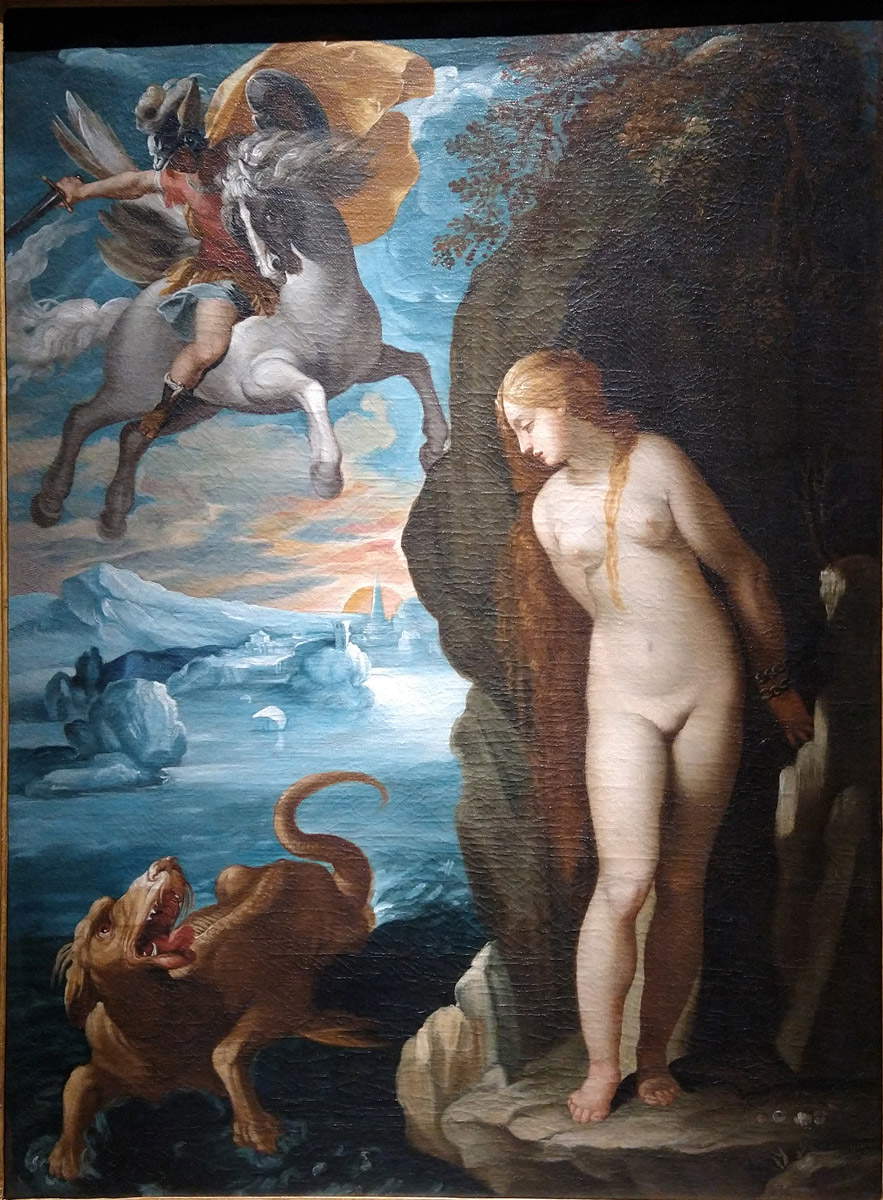
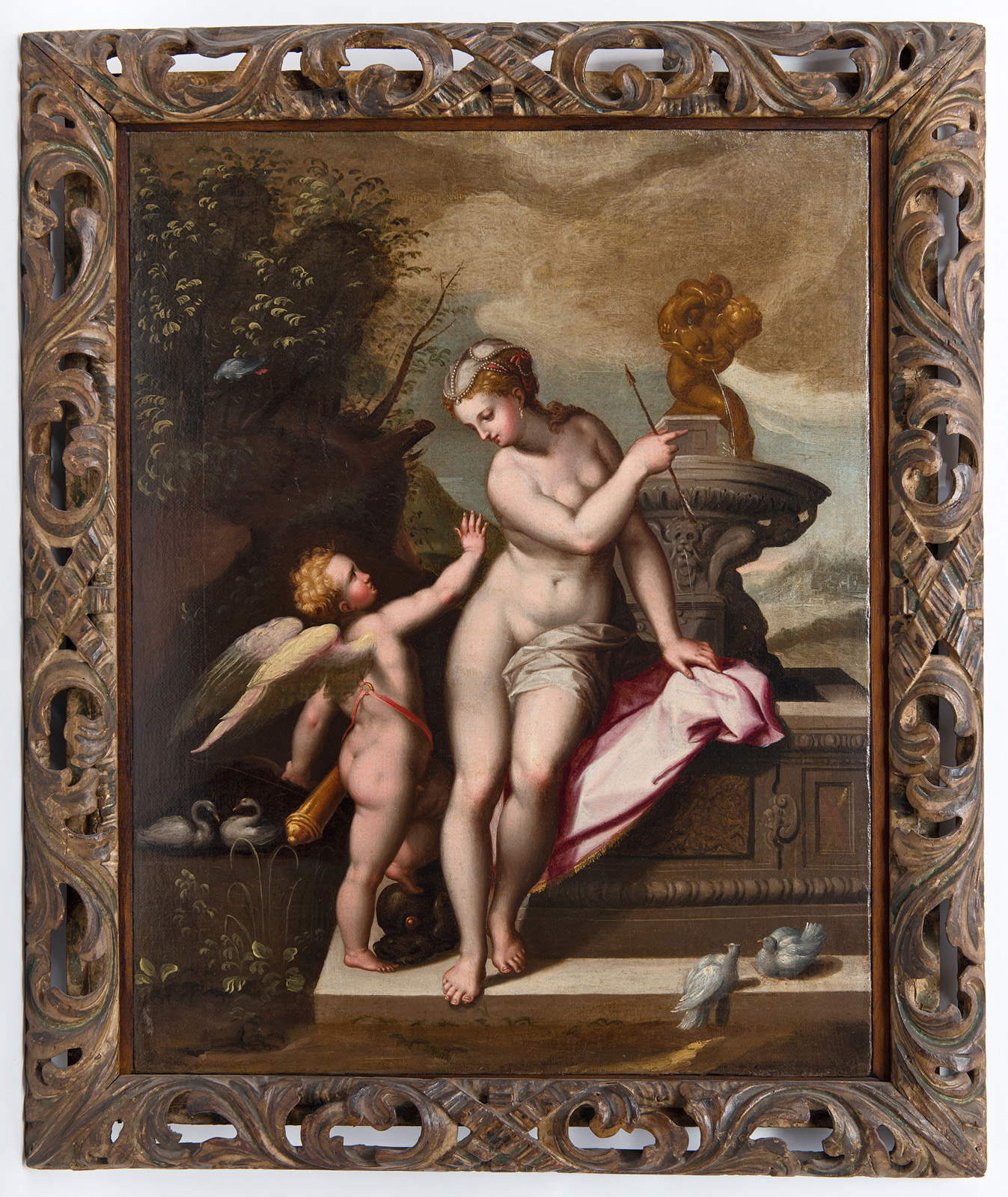
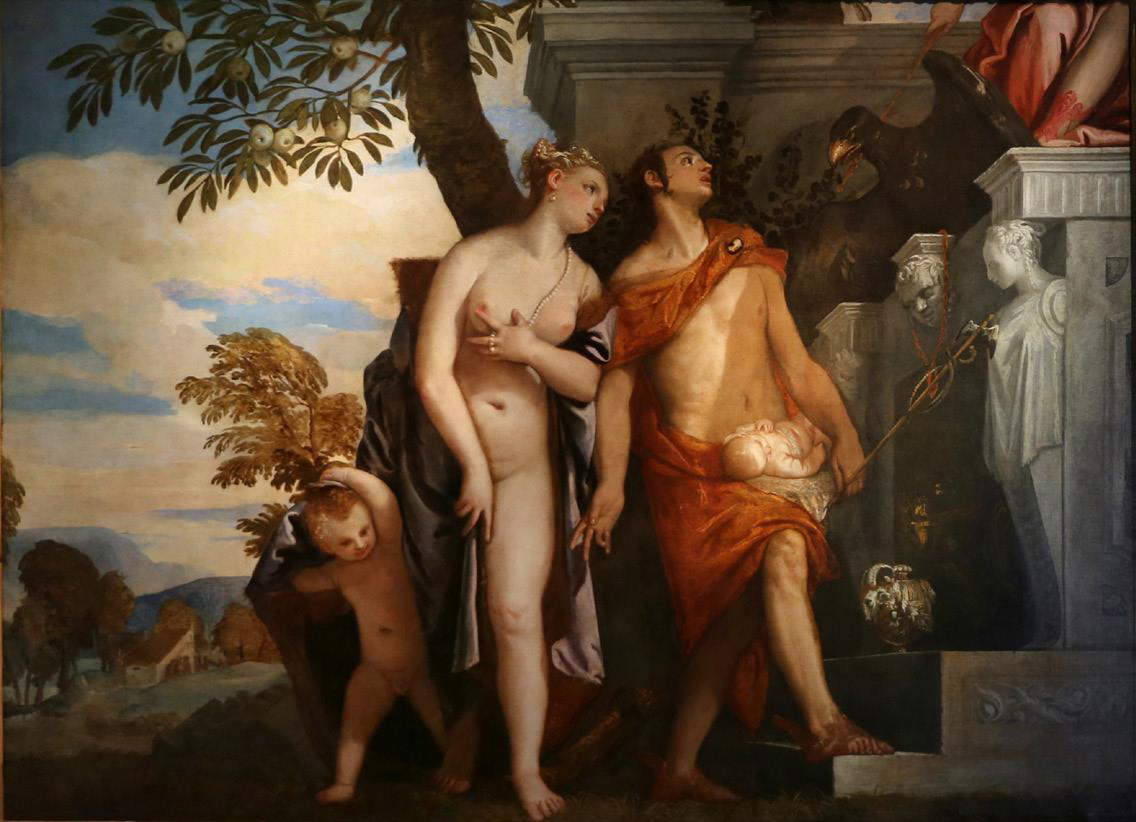
The venousness of the third chapter leads, past the Chamber of the Giants, to the fourth, where this suggestion continues on the theme of the nymph’s lightness, opened by the reconstruction of Bilderatlas panel 46, to which we are also referred by the presence of the print with a Woman carrying a vase on her head by the Venetian Agostino de’ Musi based on an invention by Giulio Romano (the realization of the dress, Lara Scanu explains in the catalog, “was studied from ancient sculptures and rendered with the typical wet drapery of the Fidelian matrix, allowing a glimpse of the breasts and navel”). In the catalog’s introductory essay, Claudia Cieri Via, as mentioned above, writes that the lightness of Venus is at the origin of the representation of numerous figures that belong to other traditions: and so here, alone to illustrate this idea, is the miniature by the Flemish Alexandre Bening, documented in Ghent in the late fifteenth and early sixteenth centuries, which features a Bathsheba at the bath in the pose of Venus pudica. Lucretius’sAlma Venus fertilizing the earth with fruit is instead recounted with five works in the following room: one has the opportunity to see a work from the picture gallery of Palazzo Magnani in Bologna, Dosso Dossi’s Awakening of Venus, in which a splendid nude Venus awakens from her slumber reviving the image of Giorgione’s Venus, and one admires Nicolas Karcher’s large tapestry on a cartoon by Giulio Romano recently acquired for the collections of the Ducal Palace in Mantua. Stefano L’Occaso signs in the catalog a thorough and interesting essay devoted precisely to the tapestry. We do not see Venus: the absence, explains the director of the Ducal Palace, is because “the observer/reader” (the depiction comes from a literary source, Philostratus’ Eikónes ) “is asked for an effort of imagination: the same that Julius Romano probably expected from an educated audience, by not showing the goddess, who in any case would have been exhibited in simulacrum, like a statue: Julius Romano once again asks his audience, accomplice to the classical source, to share mental images and thus a certain erudite complicity.”
The audience of Nature, Shadow and Beauty is also asked for an effort of imagination to call to mind the images of cruel love and insidious beauty in order to connect them to what is suddenly seen in the next section of the exhibition, the first of the two that deal with the “shadows” of the title. Venus becomes a temptress in Dürer’sOzioso, the goddess’s sumptuous nudity is the same as that of the four witches featured in another Dürer burin, love becomes a danger with the filters prepared by Dosso and Battista Dossi’s Strega, and in this jumble of continuous suggestions one also arrives at the total negation of Agostino Veneziano’s Stregozzo where the seated figure that the public had come to know at the beginning of the exhibition is overturned and becomes a ferocious witch leading a monstrous procession. The room also sees the exceptional presence of what is perhaps the main loan in the exhibition, Lucas Cranach the Elder’s panel with Venus and Cupid with a honeycomb, from the Musées Royaux des Beaux-Arts in Brussels. The greedy little Cupid tries to steal honey from a hive, the bees rightly sting him, he cries, his mother smiles sadistically: another moralizing (and cruel at the same time) presence based on an idyll by Theocritus, with Cupid caught in the same attitude as Cranach’s other Cupid who appears in a painting now in the Philadelphia Museum of Art, depicted in the act of removing a blindfold in a larger composition and then decurved (we see next to him the leg of Venus), though now no longer on the book of Plato that Panofsky saw before the painting was restored (the reproduction of the image before the removal of what turned out to be an addition is also seen in recent editions of his Studies in Iconology: the curator must also have been aware of the image before the restoration, since she writes in the catalog that Cupid stands "on a large, elegantly bound volume on which is written Platonis Opera," but the large volume is long gone).
To the deceptions of Venus is dedicated the seventh section: ambiguity is resolved in the motions of carnal pleasure that the vision of the goddess in the mirror (like the one, Titianesque, by Carlo Caliari lent by the Accademia di San Luca) provokes in the relative to the point of suggesting a certain resemblance between the goddess of beauty and the Venetian courtesans of the 16th century (the monkey in Paris Bordon’s painting is a symbol of lust), and the deceptions are openly described in anAllegory of Love by Angelo Caroselli that takes us with a long leap into the already post-Caravaggio seventeenth century. Venus returns as the goddess of beauty in the closing of the exhibition, with a chapter on which the hand of Francesca Cappelletti, who collaborated in the realization of the review, extends. It is up to her to digress into the “Camerini delle Belle,” rooms that brought together portraits of contemporary beauties, in a “mixture of portraiture and the open celebration of contemporary beauties in a mythological key,” Cappelletti writes in her essay, to be grasped even in a canvas such as Jacopo Zucchi’s The Coral Fishery, where, in the faces of the women participating in the tasty scene, portraits of some of the most beautiful Roman women of the 16th century would be identified, who thus find themselves depicted, nude, provocative and above all unsuspecting, in a painting on copper reserved for the lecherous glances and fantasies of the very fortunate patron, in this case the future Grand Duke Ferdinando de’ Medici (who, not disdaining mulieval beauty, had also commissioned a cycle of portraits of contemporary women for his villa at Artimino), still a cardinal at the time the painting was made. The section, the most successful of Nature, Shadow and Beauty despite its small size, aligns three portraits of “beauties,” a noblewoman (perhaps Clelia Farnese) by Jacopo Zucchi, Margherita Gonzaga of Lorraine by Frans Pourbus, and, also by the Flemish artist, a portrait of Eleonora de’ Medici.
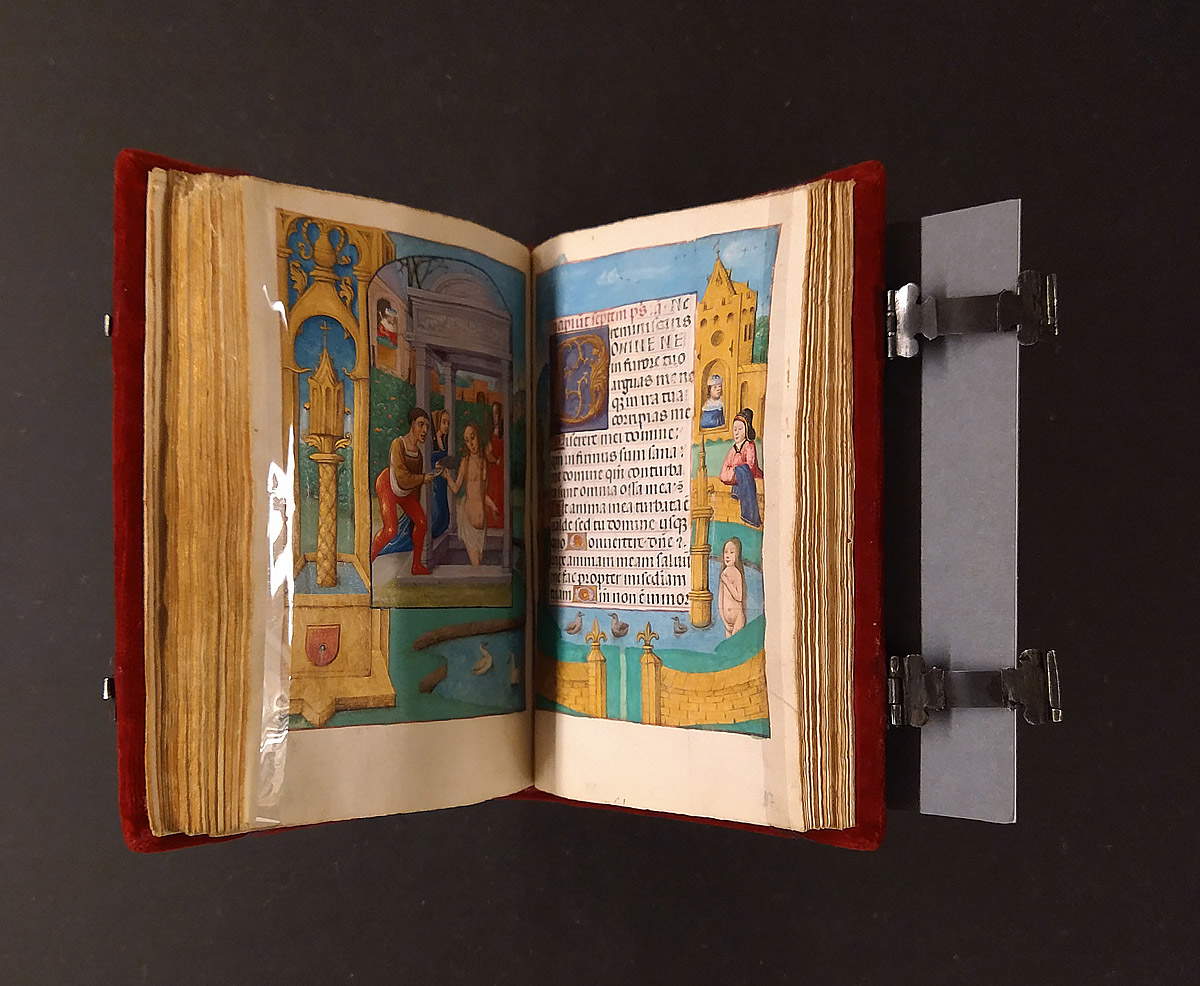


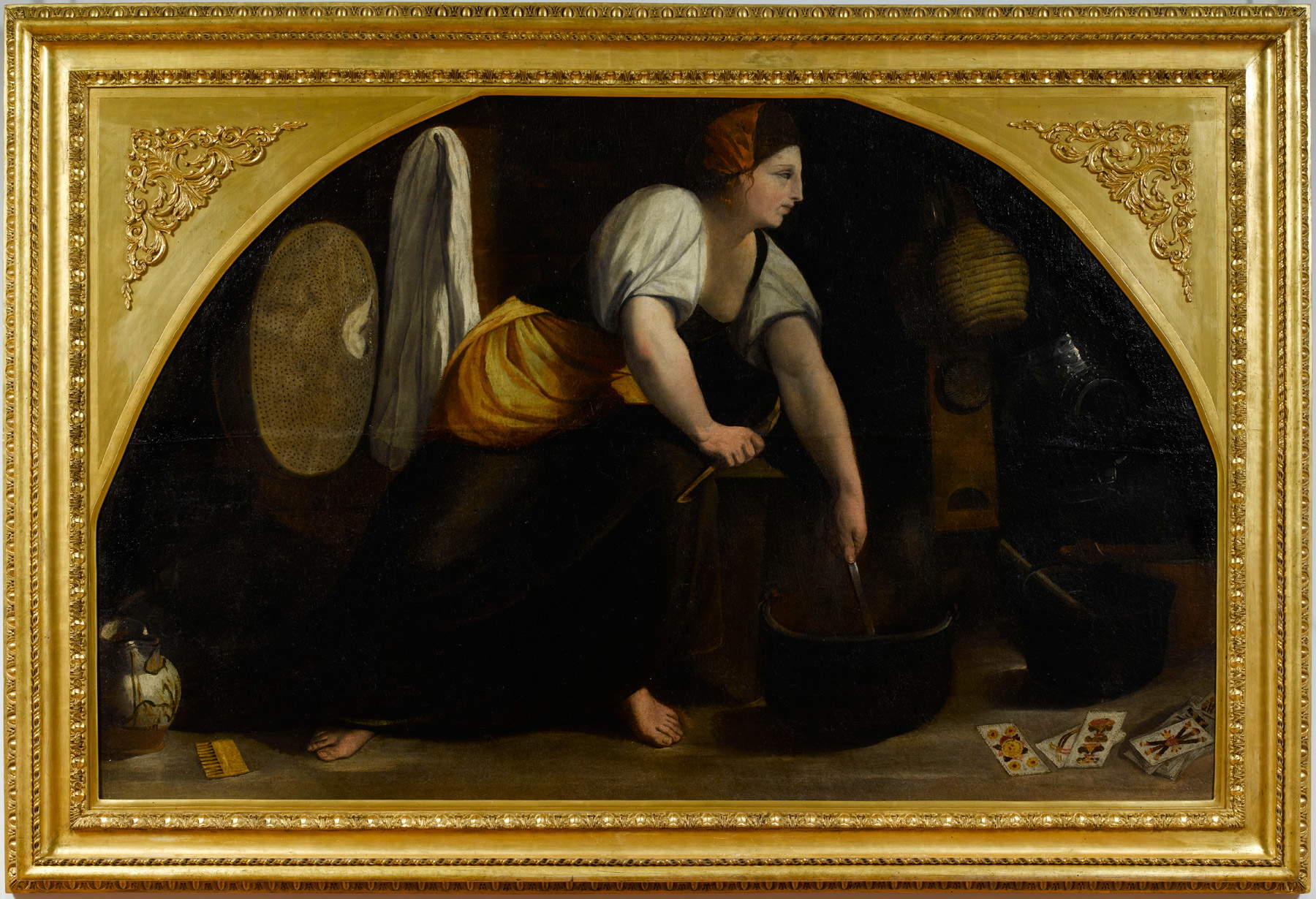

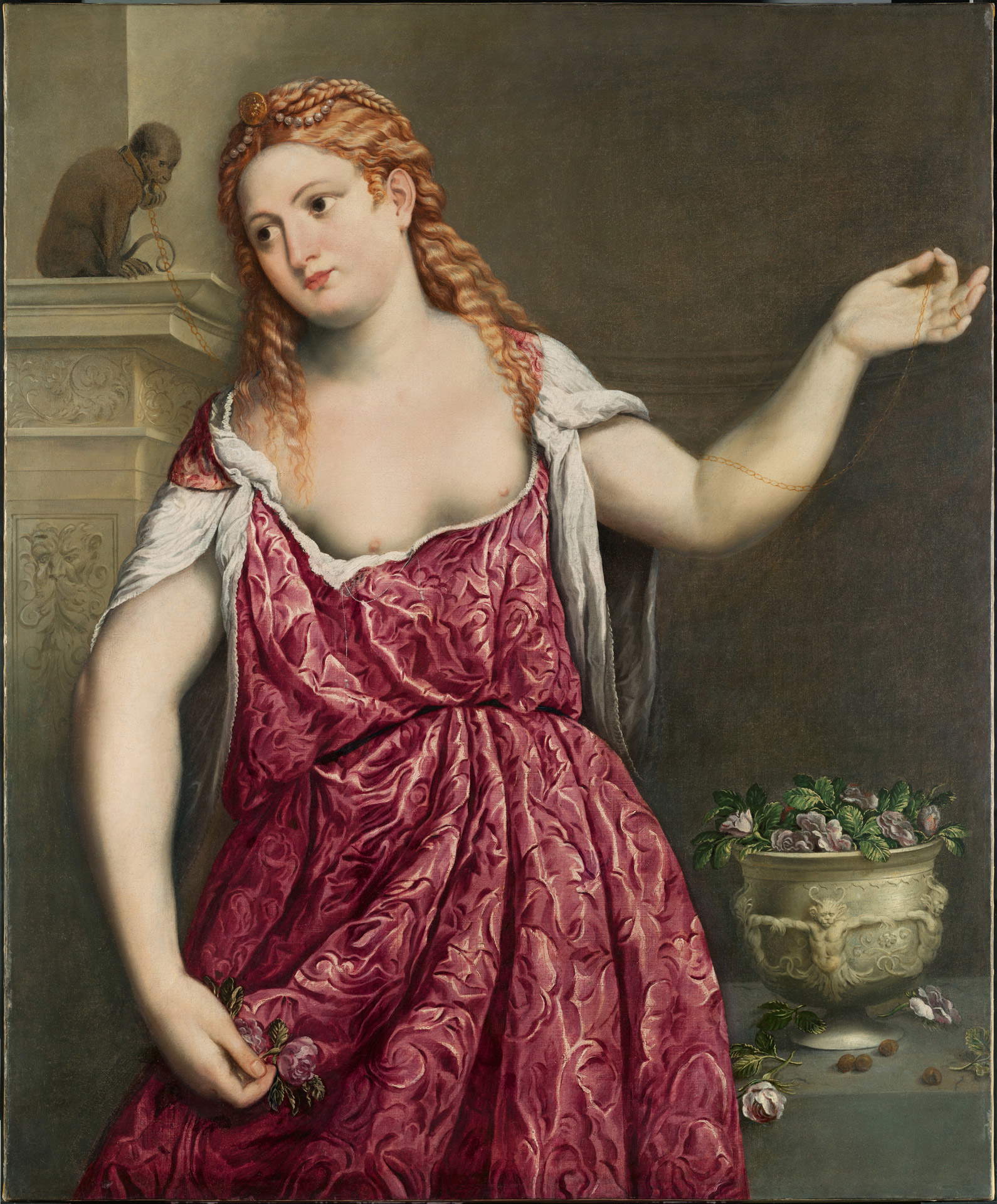
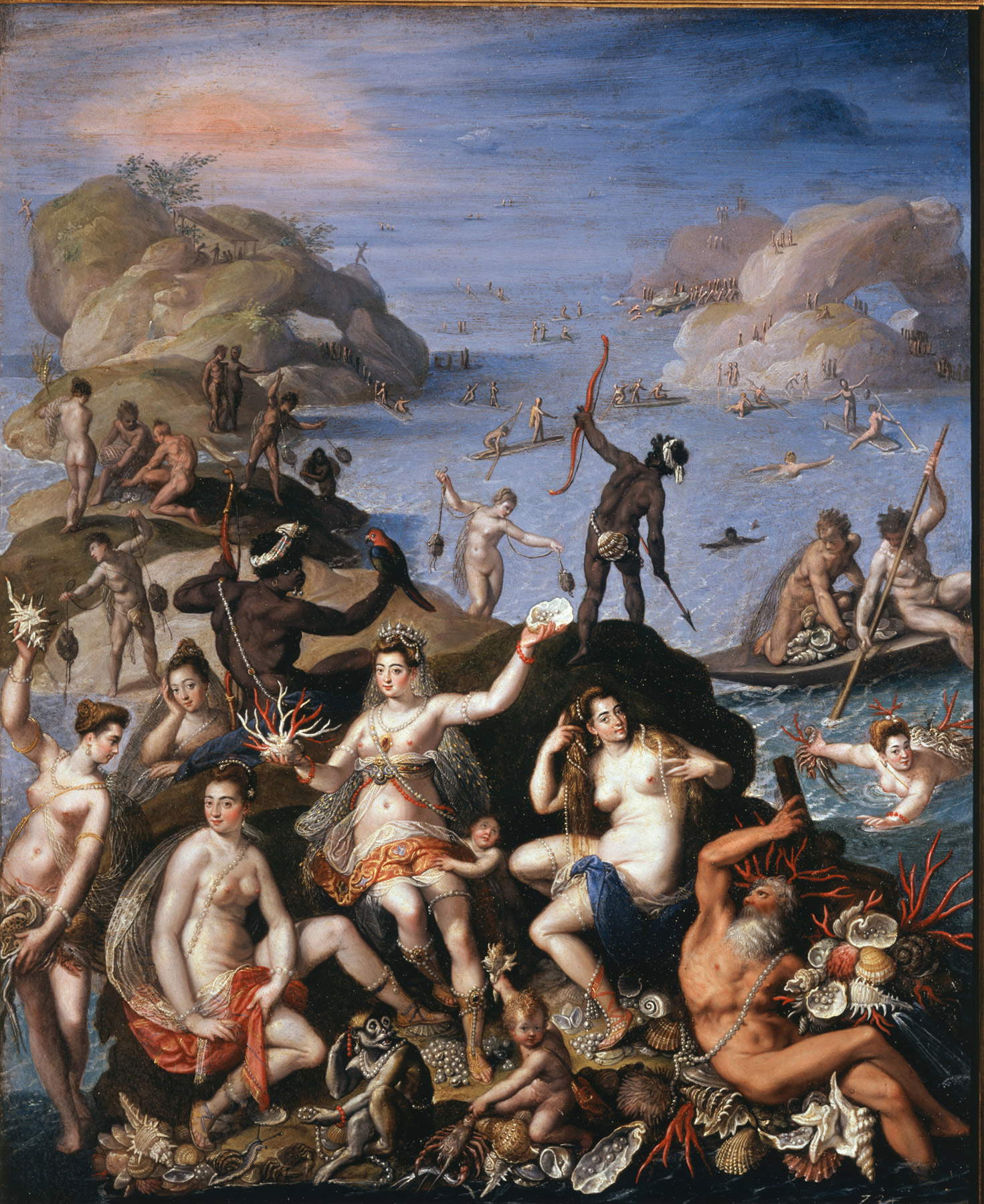


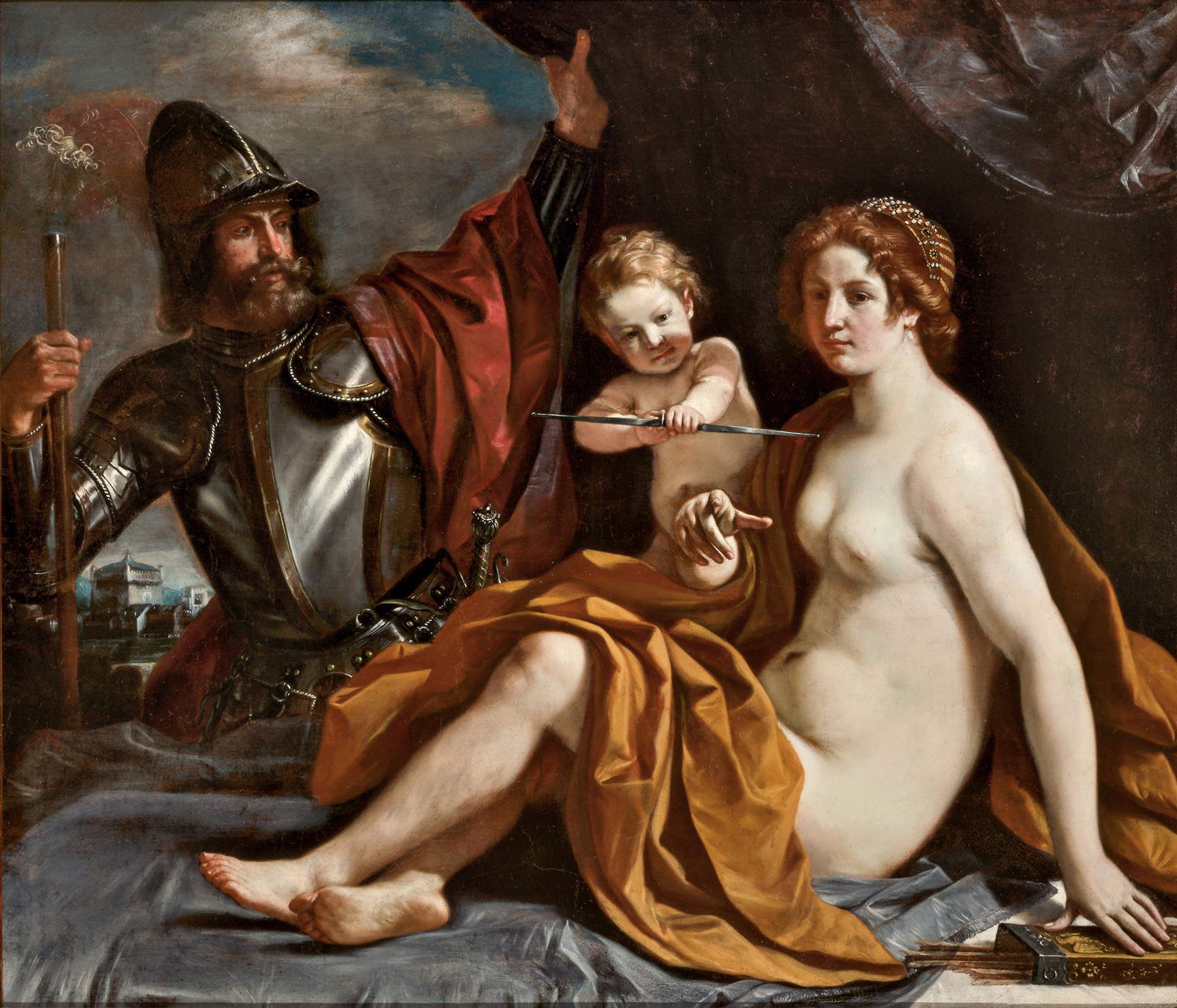
Thus, after continuous temporal leaps forward and backward and navigating through statues, paintings, papers and manuscripts, we arrive at the finale that is all about the triumph of Venus: the exhibition bids farewell to the visitor with Bilderatlas Table 55, dedicated to the Judgement of Paris, with a (obviously) Judgement of Paris by Marcantonio Raimondi based on an invention by Raphael (chosen from among those that populate the Warburgian table), with Rubens’ painting of the same subject coming from the Akademie der bildenden Künste, and with a Venus, Cupid and Mars by Guercino that at least according to the catalog was supposed to be in the third section but for some reason ended up out of context at the close of the tour. Nature, Shadow and Beauty is, after all, a review that in fact contains in the path itself the elements to cross the boundaries between one part and another. Nachleben der Bilder.
For Warburg and the Bilderatlas Mnemosyne more opportunities for further study will surely come. For Venus also. Perhaps not at Palazzo Te, which has already given, but that is not a problem: Nature, Shadow and Beauty was in fact the third stage of an annual project dedicated to the goddess. The second was the exhibition of Titian’s Venus Binding Love, on loan from the Galleria Borghese directed by Francesca Cappelletti who, as mentioned above, collaborated on the exhibition and presented in Mantua the results of new research on the painting. These were diagnostic investigations carried out in the first part of the year in Rome, which revealed, among other things, the presence of a quadrettato under the pictorial surface, demonstrating the subject’s fortune in a period, the second half of the 16th century, when the market for the works of Titian and his workshop was particularly flourishing. Instead, the first stage was the unveiling of a guide to the Venuses frescoed on the walls of Palazzo Te. A one hundred and twenty-page book, practical, agile, low-cost (only fourteen euros), published by Tre Lune, to discover the images of the goddess of beauty that Giulio Romano and colleagues left among the decorations of the palace. And those will remain.
Warning: the translation into English of the original Italian article was created using automatic tools. We undertake to review all articles, but we do not guarantee the total absence of inaccuracies in the translation due to the program. You can find the original by clicking on the ITA button. If you find any mistake,please contact us.